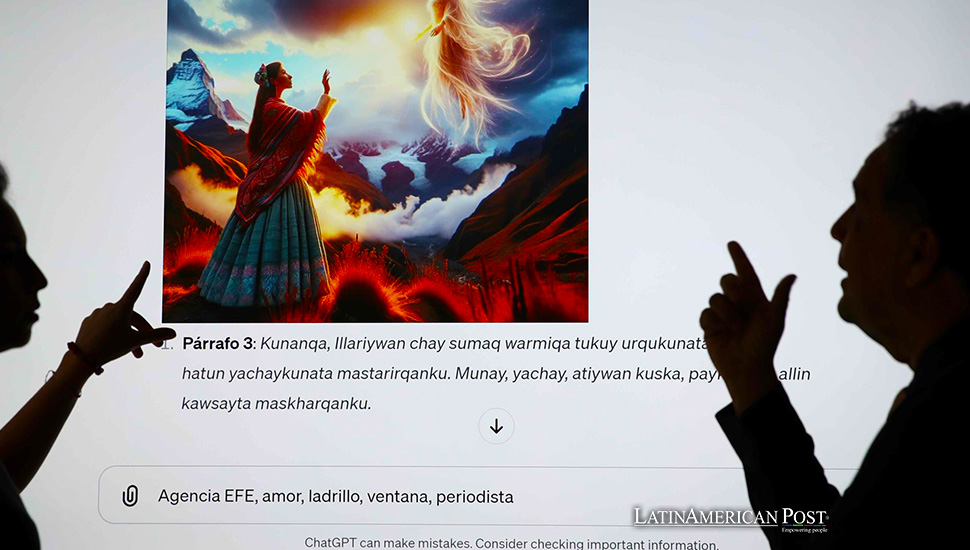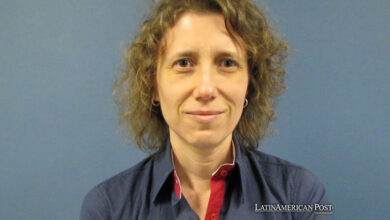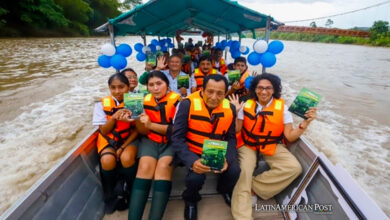Illary: Harnessing AI to Preserve Indigenous Languages in Peru’s Academia

In Peru, an AI chatbot named Illary, meaning “dawn” in Quechua, is revolutionizing the preservation of indigenous languages. Developed by the Universidad Nacional Mayor de San Marcos, Illary creates stories in Quechua, incorporating Andean legends and culture. This initiative challenges stereotypes and demonstrates technology’s potential as an ally in safeguarding Peru’s 48 native languages from extinction.
Bridging the Gap: Illary’s Mission to Preserve Indigenous Languages
A groundbreaking project in Peru bridges this divide in the digital age, where artificial intelligence (AI) often widens the gap between the modern world and traditional cultures. Illary, a Quechua word for “dawn,” is an AI-powered chatbot developed by a dedicated team at the Universidad Nacional Mayor de San Marcos, the oldest university in the Americas. This initiative marks a pivotal moment in the intersection of technology and cultural preservation, offering a novel approach to safeguarding indigenous languages at risk of fading into oblivion.
A profound realization drove the inception of Illary: AI technology, despite its advancements, was inadvertently sidelining indigenous languages, leaving them out of the digital conversation. “We saw that artificial intelligence was discriminatory against native languages; it wasn’t designed for them,” explains Carlos Fernández, the project’s lead, and director of the Office of Communication and Institutional Image at the Faculty of Letters and Human Sciences. Determined to reverse this trend, Fernández and his team embarked on a mission to transform AI into a crucial instrument for preventing the extinction of Peru’s 48 native tongues.
Illary is not just any chatbot. It deeply connects to the Andean region’s roots, traditions, and biosphere. By weaving stories in Quechua that draw from ancient legends and the rich tapestry of Andean culture, Illary offers students and enthusiasts a unique portal to explore and engage with the language. Its tales are accompanied by images crafted through software programmed by the team, bringing the aesthetic beauty of the Peruvian Andes to the digital realm.
Educational Impact: Illary’s Role in Quechua Language Learning
This innovative tool is particularly beneficial for students studying Quechua, including those preparing for admission exams or pursuing careers in translation and linguistics. Illary also serves a broader purpose, introducing Lima’s tech-savvy population to the language and expanding its reach and relevance in contemporary, technocratic contexts.
Illary’s influence extends beyond chat interactions. It hosts a Quechua news broadcast and offers language lessons on TikTok through educational videos, embracing social media as a platform to disseminate knowledge and foster appreciation for Quechua. The team is also working diligently to enhance Illary’s proficiency in Aymara and Awajún, two other widely spoken indigenous languages in Peru, aiming to create a multilingual AI that serves as a beacon for language preservation.
The project’s early days were met with skepticism. Fernández recalls the initial resistance from colleagues who feared Illary might render their roles obsolete. Contrary to these concerns, Illary has become a valuable asset, enriching the educational experience and proving that AI can coexist with and enhance traditional teaching methods. Behind Illary’s seamless interaction lies the tireless work of professors responsible for creating phonetic templates, curating content, and refining the chatbot’s linguistic accuracy.
AI as Catalyst: Pedagogical Innovation
Fernández highlights how Illary’s development has spurred other innovative projects within the university. One such venture is a chatbot that recommends books based on users’ moods, while another assists with cooking recipes based on available ingredients. These initiatives exemplify how AI can transcend its role as a mere technological tool, becoming a catalyst for creativity, critical thinking, and pedagogical innovation.
The integration of Illary into the academic framework signals a paradigm shift in education. It underscores educators’ need to adapt their methodologies in an AI-influenced landscape, where fostering creativity and critical thinking becomes paramount. “We professors have to change our mindset,” Fernández asserts, advocating for a pedagogical approach that leverages AI to enhance learning outcomes and stimulate intellectual curiosity.
At its core, Illary is more than a technological marvel; it is a guardian of cultural heritage. Illary fights against the erosion of cultural identity, social cohesion, and historical memory by enabling the continued use and study of Quechua and other indigenous languages. “If we lose a language, we lose more than just words; we lose culture, social identification, and much more,” Fernández emphasizes. In this light, Illary stands as a testament to the resilience of indigenous languages and their enduring significance in the collective consciousness.
Global Call to Action
Illary’s journey from concept to reality is a global call to action for societies. It exemplifies how technology, guided by ethical considerations and a commitment to cultural preservation, can play a pivotal role in safeguarding intangible heritage. This project challenges other academic institutions and technology developers to explore similar pathways, ensuring that the digital revolution becomes a force for inclusivity and cultural preservation.
As Illary continues to evolve and expand its linguistic capabilities, it heralds a new era in preserving indigenous languages. This AI chatbot represents a fusion of technology and tradition, offering a model for how the digital age can embrace and elevate the voices of the past. In the bustling streets of Lima and the digital corridors of social media, Illary serves as a bridge between generations, inviting all to partake in the rich linguistic heritage of Peru.
Also read: Mexican Museum Displays Skulls of Characters Made with Indigenous art and Swarovski Crystals
In a world where technology pulls us further from our roots, Illary is a beacon of hope, demonstrating that AI can become humanity’s ally in preserving the diverse tapestry of languages that define our shared history. Through initiatives like Illary, the dawn of a new day in cultural and linguistic preservation is on the horizon, promising a future where technology and tradition work together toward a more inclusive and culturally rich tomorrow.




